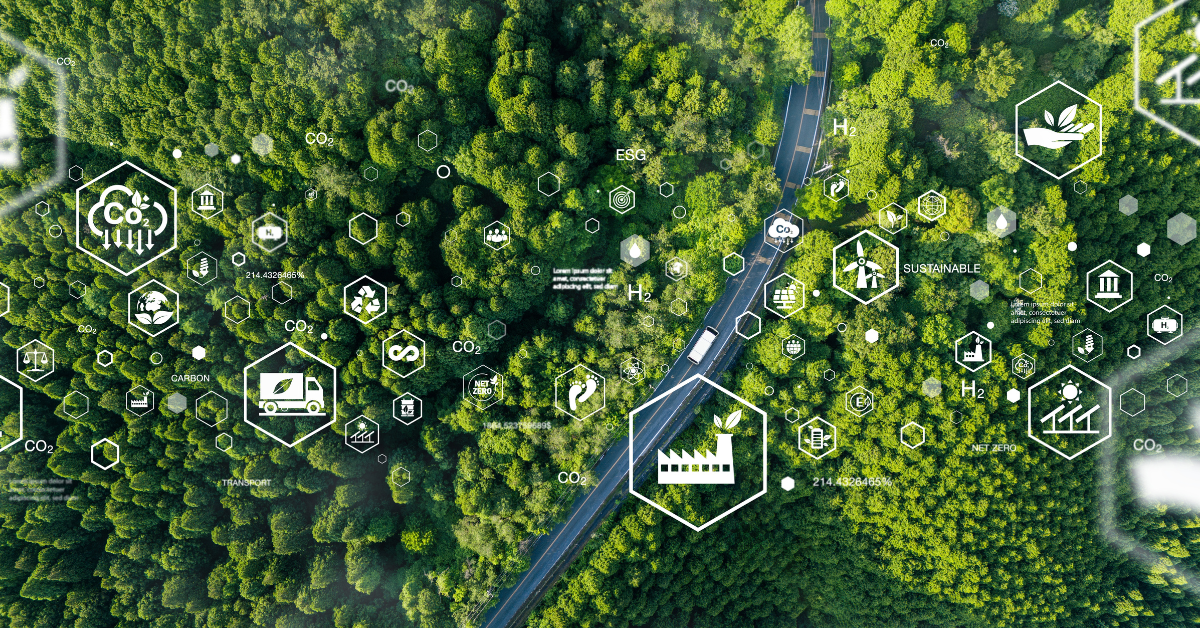
In today's world, sustainability has emerged as a crucial factor for businesses, irrespective of their size, including small and medium-sized enterprises (SMEs). As SMEs are considered the backbone of the economy, it is essential for SMEs to establish a sustainability framework that ensures profitable and responsible operations.
Why sustainability is important for SMEs
Increased SME awareness and involvement on these issues is indispensable both to achieve these goals and to comply with regulatory obligations introduced at the EU level. The EU legislative landscape has changed in recent years by introducing obligations that have progressively extended to SMEs directly or that affect them indirectly if they are part of the supply chain of large companies.
The Corporate Sustainability Reporting Directive (CSRD)
An example of the extension of these obligations is the Corporate Sustainability Reporting Directive (CSRD), a regulatory framework introduced by European lawmakers in 2021 to replace the previous European Non-Financial Reporting Directive (NFRD). Its main objective is to accelerate the transition towards a more sustainable economy and combat greenwashing practices.
The CSRD expands the reporting obligations to 50,000 companies in Europe and requires businesses with a minimum of 250 employees to disclose non-financial information starting from 2023. Additionally, it proposes to extend reporting requirements to listed small and medium-sized enterprises (SMEs), excluding microenterprises, in a phased approach until 2027.
Compliance with the CSRD focuses on governance and measurement, requiring companies to establish internal accountability structures and track key performance indicators (KPIs) to assess progress toward sustainability goals.
The Corporate Sustainability Report, as required by the CSRD, includes elements such as business model description, sustainability policies, negative impact mitigation, risk management, and relevant KPIs. Accurate identification and tracking of sustainability KPIs are crucial for both measuring performance and meeting reporting obligations.
The Corporate Sustainability Due Diligence Directive (CSDDD)
The Corporate Sustainability Due Diligence Directive (CSDDD) was introduced by the Commission in February 2022. Its purpose is to prompt businesses to adopt sustainable and responsible corporate behaviour, incorporating human rights and environmental considerations into companies' operations and governance.
The directive mandates that companies, including those in their subsidiaries and value chains, must identify, prevent, mitigate, and account for negative human rights and environmental impacts. The directive applies to EU limited liability companies with substantial size and economic power, as well as other limited liability companies in defined high-impact sectors and non-EU companies operating in the EU.
While the obligations do not directly extend to SMEs, they may be indirectly affected if they are part of the supply chain of an organization falling under the directive. To comply with the due diligence duty, companies must integrate due diligence into policies, identify and address potential impacts, establish a complaints procedure, monitor the effectiveness of measures, and publicly communicate their due diligence efforts. The directive also introduces directors' duties to oversee the implementation of due diligence and integrate it into the corporate strategy.
The EU Taxonomy regulation
The EU Taxonomy regulation is a significant component of the EU's sustainable finance framework, serving as a crucial market transparency tool. It was introduced to provide companies and investors with a common language for identifying "sustainable" activities and investments that align with the EU's 2030 climate goals.
The regulation aims to redirect capital flows towards sustainable investments, manage financial risks related to climate change and environmental degradation, and promote transparency and long-term vision in financial and economic activities.
These criteria used by the Commission to classify “sustainable activities and products” include substantial contribution to environmental objectives, avoidance of significant harm to environmental goals, compliance with minimum safeguards, and adherence to technical screening criteria set by the European Commission.
While the regulation primarily affects financial market participants and advisers, it provides a framework for businesses, including SMEs, to assess and align their activities with sustainable objectives. By following the steps outlined in the regulation, businesses can make a substantial contribution or avoid significant harm to environmental objectives.
The Carbon Border Adjustment Mechanism (C.B.A.M)
The Carbon Border Adjustment Mechanism (C.B.A.M) is a tool introduced by the European Union as part of its efforts to accelerate the sustainable transition and promote responsible business behaviour.
It aims to address carbon emission relocation and is a key element of the EU's "Fit for 55%" agenda. The C.B.A.M aligns the carbon price of domestic products with imports to prevent the undermining of EU climate policies by countries with lower environmental standards or higher carbon intensity imports.
This mechanism, which is WTO-compatible, encourages global industries to adopt greener and more sustainable technologies. It applies to companies from October 1st, 2023. During this initial period (transitional phase) it covers imports of cement, iron and steel, aluminum, fertilizers, electricity, and hydrogen.
In this phase, EU importers of these goods are required to report import volumes and embedded greenhouse gas emissions without any financial adjustments. The transitional phase allows for flexibility in reporting. However, from 2026 onwards importers will need to purchase and surrender "C.B.A.M certificates" for the emissions embedded in the imported goods.
The C.B.A.M will undergo a review during the transitional phase to refine its methodology and assess the possibility of expanding its scope to other goods produced in the ETS sectors. While the C.B.A.M primarily affects importers, it also creates obligations for businesses, including SMEs, involved in the production and trade of covered goods.
SME strategy definition and framework setting
Although the task of defining a sustainability strategy may seem daunting for SMEs, it is not impossible.
By taking a few simple steps, SMEs can create a sustainability framework that aligns with their business objectives and complies with international standards. An important contribution to the development of sustainability in the SME environment was made by the UN Global Compact with the creation of the MAJU Framework.
The toolkit is conceived as an easy step-by-step guide to help SMEs approach sustainability in ways that are more comfortable to them, helping with the basic knowledge to get you started.
Company’s impact assessment
The initial step in developing a sustainability strategy involves assessing the environmental and societal impact of the company. This includes the examination of energy and water usage, waste generation, and carbon emissions.
It is also important to evaluate the effects of the products or services on the environment and society, such as their use of natural resources or the working conditions of the workers involved in their production.
In order to understand the possible sources of the impact of a company, it is possible to undergo different self-assessment processes. An example of simplification of the global ESG frameworks, which has been adapted to serve SME purposes, is the CDP framework for climate disclosure made for SMEs. Another example of self-assessment is offered by Synesgy. The assessment process is conducted using a qualitative-quantitative questionnaire, which upon completion, provides a summary assessment of the ESG performance based on the information provided.
The methodology employed by Synesgy is based on various international sustainability standards, which include the Global Reporting Initiative, UN Global Compact, Carbon Disclosure Project and EU Taxonomy guidelines.
Target definition and goal setting
Once an organization has assessed its current impact, goals and targets can be set for improving sustainability performance. Specific, measurable and achievable goals should be established, which align with the organization's business objectives and consider any relevant regulations or industry standards.
Targets such as reducing energy usage by a certain amount within the next year or increasing the amount of recycled content in products can be set to track progress and demonstrate the organization's commitment to sustainability to stakeholders.
Action plan development
An action plan must be developed to outline steps to improve sustainability performance to achieve sustainability goals. The plan must include specific actions, timelines, and responsible parties for each target or goal.
For instance, reducing energy usage goal can be achieved by conducting an energy audit to identify areas where energy consumption can be reduced, upgrading to more energy-efficient equipment or lighting, implementing employee training programs to encourage energy-saving behaviours, and installing renewable energy systems, such as solar panels or wind turbines.
Plan implementation and performance monitoring
After developing an action plan, implementation becomes necessary. Adjustments may be required in the operations, purchasing decisions, or supply chain.
It is also important to communicate sustainability goals and progress to stakeholders, including employees and customers, to gain support for sustainability efforts.
Monitoring and reporting on sustainability performance are crucial to track progress and identify improvement areas. Regular reviews of sustainability metrics, such as energy usage or waste generation, should be conducted and progress toward goals and targets should be reported. This information may provide opportunities for further improvement or necessary adjustments to the action plan.
Stakeholders engagement
Engaging with stakeholders is crucial for the success of a SME’s sustainability strategy. This includes employees, customers, suppliers, and other members of the SME community.
SMEs should communicate their sustainability goals and progress to these stakeholders and seek their feedback and input. Engaging with stakeholders can also help companies identify new sustainability improvement opportunities.



